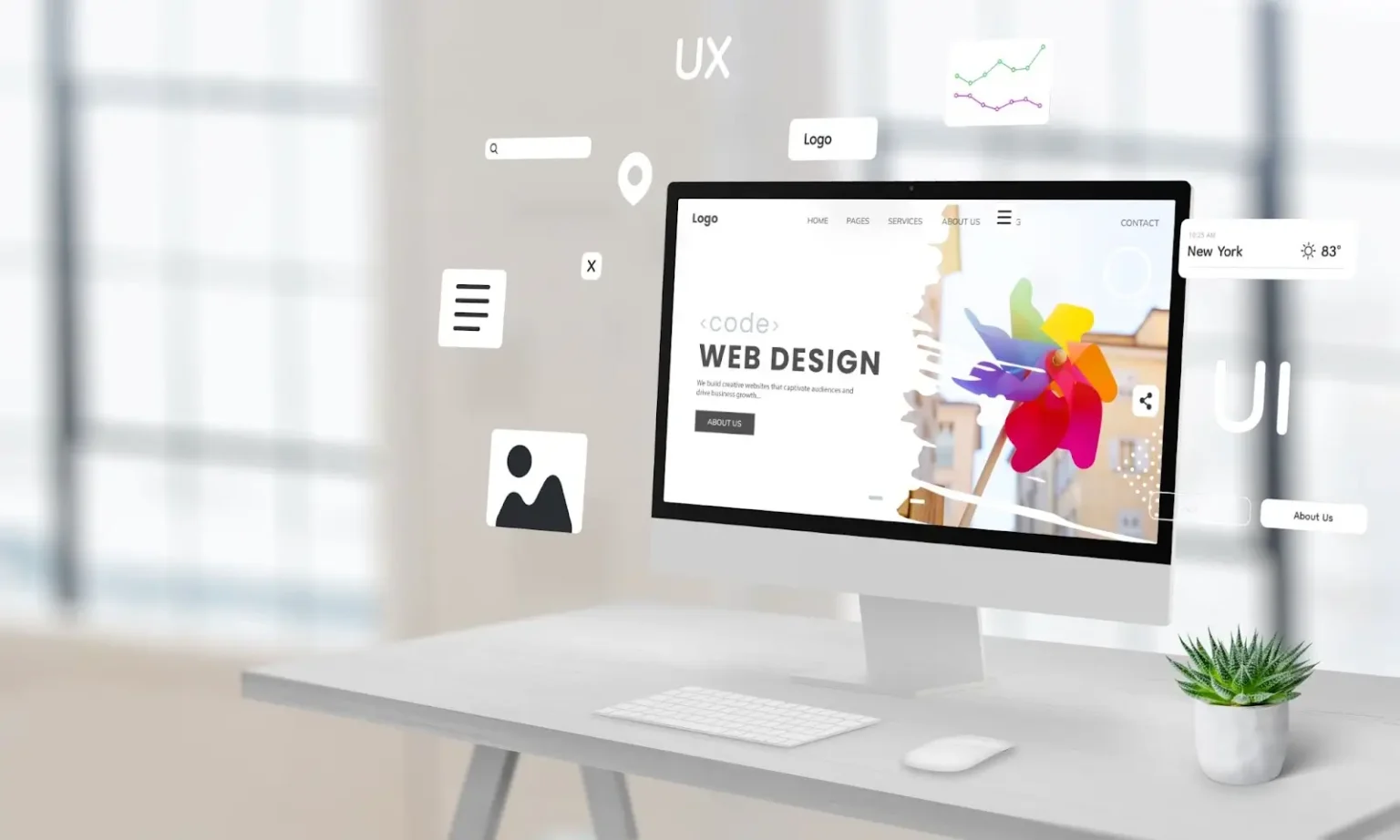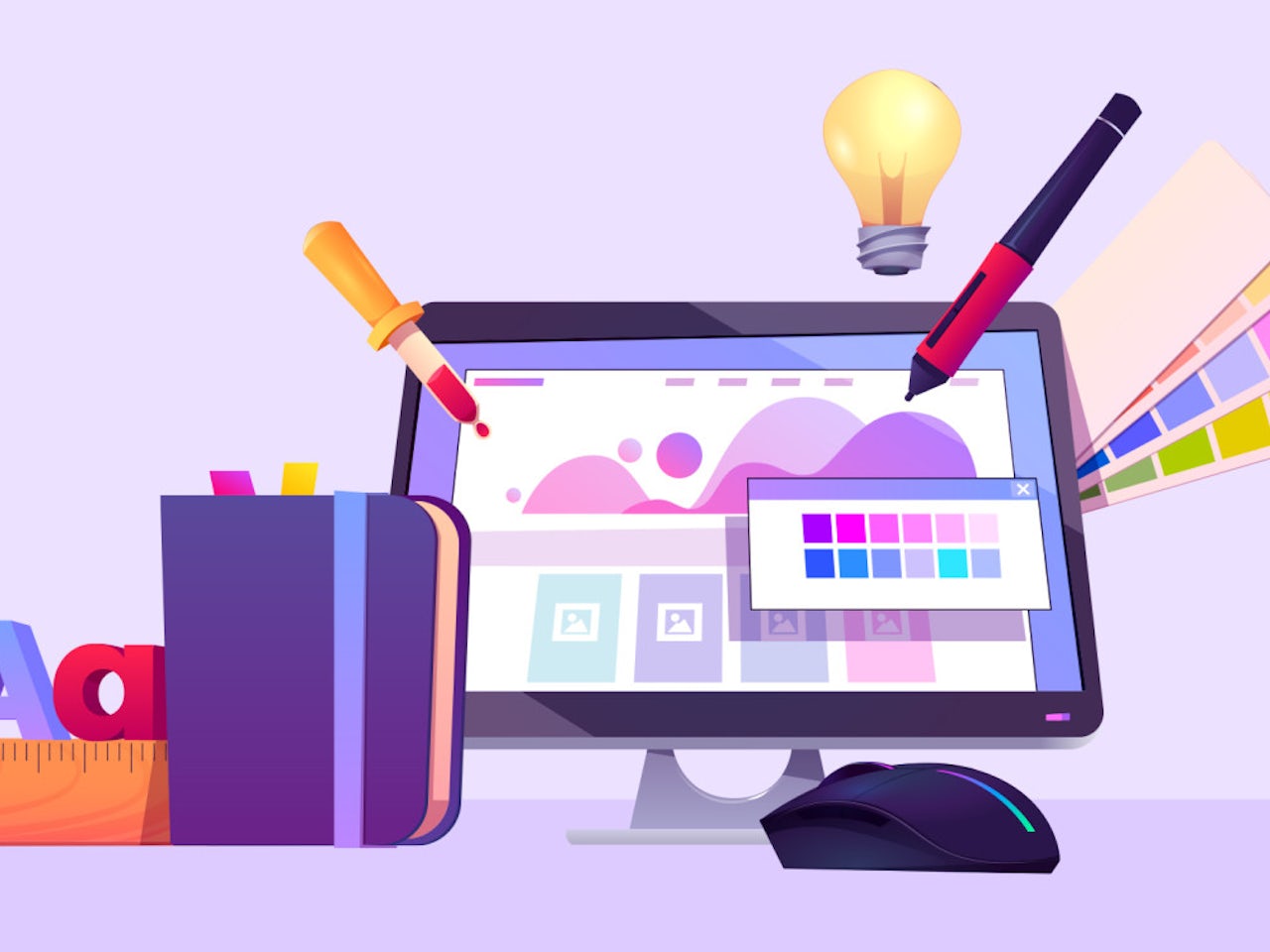How Web Design services define your company’s digital identity
Wiki Article
The Significance of User Experience in Reliable Web Design Strategies
User experience (UX) works as a foundation in efficient web design approaches. It forms exactly how users connect with a website, influencing their satisfaction and likelihood of returning. A properly designed UX can improve engagement via intuitive navigation and responsive layouts. Neglecting these aspects may lead to stress and raised bounce prices. Comprehending the details of UX is essential for designers intending to develop engaging electronic experiences that reverberate with varied audiences. What aspects absolutely drive successful user engagement?Recognizing User Experience and Its Influence On Layout
User experience (UX) is commonly perceived as a plain element of web layout, it essentially shapes just how individuals interact with an internet site. UX includes all facets of the user's interaction, including functionality, ease of access, and total fulfillment. A favorable UX cultivates involvement, motivating customers to check out the website and return in the future. Conversely, a negative experience can lead to aggravation, resulting in high bounce rates and shed possibilities for conversion.Design components like design, navigating, and content organization play crucial duties in shaping this experience. Efficient UX design expects user needs and preferences, making certain that info is aesthetically enticing and easily accessible. Additionally, understanding user actions with analytics can give valuable understandings, educating style choices that improve functionality. Eventually, an extensive understanding of UX enables designers to create web sites that not only attract individuals but also advertise purposeful interactions that straighten with company goals and user expectations.
Key Concepts of Efficient User Experience
Effective user experience pivots on a number of key principles that improve web site functionality and engagement. Intuitive navigating style, receptive layout essentials, and the importance of visual hierarchy are crucial aspects that contribute to a seamless communication in between customers and internet material. Recognizing these principles permits designers to create more user-friendly and easily accessible electronic atmospheres.Intuitive Navigating Style
Intuitive navigation design serves as a crucial entrance to their total experience when individuals run into an internet site. Reliable navigation permits individuals to easily situate the details they look for, improving their interaction with the website. Trick principles consist of clear labeling, logical company, and regular positioning of navigation aspects. Tags should be uncomplicated, permitting individuals to predict the content they will certainly find. A well-structured power structure helps individuals understand the relationship between different areas, guiding them with the internet site effortlessly. In addition, responsive food selections and conveniently obtainable web links add to a fluid experience across devices. By focusing on instinctive navigation, developers can significantly decrease user frustration and rise interaction, ultimately fostering a favorable assumption of the web site and its content.Responsive Layout Basics
A well-structured navigating system normally results in the demand for a responsive layout, which is important in today's varied electronic landscape. A responsive format warranties that websites feature effortlessly throughout different tools, including smart devices, desktops, and tablets. This flexibility boosts user experience by enabling material to be visually meaningful and conveniently accessible, no matter display dimension. Secret principles of receptive style include liquid grids, flexible images, and media questions, which promote perfect watching. In addition, prioritizing touch-friendly elements improves communication on mobile devices. By executing a receptive design, developers can suit individuals' demands, decrease bounce prices, and boost engagement. Inevitably, a well-executed receptive layout cultivates a favorable user experience, urging visitors to discover the website better.Visual Pecking Order Value
Visual pecking order plays a crucial role in leading customers through a site, making sure that vital information records their interest. By purposefully using dimension, contrast, color, and spacing, developers can develop a clear pathway for individuals to adhere to. Bigger aspects commonly draw the eye, showing their importance, while contrasting colors can highlight contact us to activity. Furthermore, consistent alignment and group of associated material boost comprehension, making navigating user-friendly. Effective use visual pecking order not just improves functionality however also supports the general visual of the site, cultivating a positive user experience. When individuals can quickly determine the most important information, they are most likely to involve with the content, bring about increased satisfaction and interaction with the web site.The Duty of Usability in Web Design
Functionality plays an important duty in web design, specifically via navigation simplicity and adherence to accessibility requirements. Effective navigating enhances user complete satisfaction by enabling site visitors to discover info rapidly and without effort. Meanwhile, meeting ease of access criteria ensures that all individuals, despite their capacities, can efficiently connect with the internet site.Navigation Simplicity
Simpleness in navigation stands as a keystone of efficient web design, greatly affecting user experience. A streamlined navigating system enables users to locate information quickly and with ease, lowering aggravation and boosting contentment. Clear labeling and rational framework are vital components, guiding individuals easily via the site. Redundant web links or overly intricate food selections can disorient users, resulting in increased bounce prices. Additionally, mobile responsiveness should be thought about, making certain navigation remains simple across tools. Prioritizing crucial pages and lessening mess even more supports user interaction. Efficient navigating not just fosters a favorable experience however likewise encourages individuals to check out the site better, inevitably bring about higher conversion prices. In this regard, navigation simpleness acts as an essential consider the total efficiency of web design approaches.Accessibility Specifications
User engagement is considerably boosted when sites abide by availability standards, making sure that all users, regardless of their capacities, can navigate and connect successfully. Conformity with these requirements not just broadens the target market but also improves total user satisfaction. Accessible layout integrates functions such as message alternatives for pictures, key-board navigation, and adequate color comparison, which help with usage by individuals with specials needs. On top of that, implementing these criteria can favorably impact search engine optimization (SEO) by boosting site structure and clearness. As web design progresses, focusing on access becomes vital in cultivating a comprehensive digital environment. By embracing these standards, developers add to an extra equitable internet, inevitably driving user commitment and involvement.Value of Responsive Style for User Engagement
As customers significantly accessibility websites via a variety of devices, the significance of responsive design ends up being paramount for engaging users successfully. Responsive design guarantees that a web site adapts flawlessly to different display sizes, providing a suitable viewing experience no matter of the tool made use of. This flexibility improves user involvement by helping with less complicated navigating and interaction with material.When users encounter a web site that is receptive, they are most likely to remain longer, explore further, and return in the future. A well-designed receptive layout reduces the frustration frequently connected with zooming and scrolling on smaller screens, therefore reducing bounce prices. Furthermore, responsive layout can favorably affect internet search engine rankings, as online search engine prioritize mobile-friendly internet sites. In today's digital landscape, where mobile use remains to rise, implementing responsive design is not simply advantageous, but vital for maintaining user engagement and ensuring a favorable experience throughout all devices.
Enhancing Load Times for Better User Complete Satisfaction

To enhance load times, web developers should focus on optimizing images, leveraging browser caching, and decreasing HTTP demands. Additionally, using Web content Delivery Networks (CDNs) can accelerate material shipment by distributing it across numerous geographical locations. Simplifying code, such as compressing CSS and JavaScript files, further adds to much faster loading speeds.
Eventually, a dedication to enhancing tons times not only enhances user fulfillment but additionally strengthens brand loyalty and improves the probability of repeat visits. A swift, seamless experience is necessary for retaining users and cultivating positive interactions.
The Impact of Visual Pecking Order on User Communication
Aesthetic hierarchy works as a vital aspect in directing user interaction on a web site. By organizing material in such a way that focuses on information visually, developers can affect exactly how customers navigate and engage with a site. This power structure is established via different layout strategies, consisting of size, spacing, contrast, and shade. Larger font styles or bold colors attract focus to crucial components, such as phone calls to action or headings, while suppressed colors and smaller sized fonts can indicate subordinate info.Reliable aesthetic pecking order aids customers promptly recognize what is most vital, decreasing cognitive load and enhancing use. It enables intuitive navigating, making it easier for users to find what they require without stress. As individuals interact with a website, a well-structured visual hierarchy promotes an extra rewarding experience, eventually resulting in higher involvement and conversion prices. Designers have to prioritize these principles to develop a efficient and user-centered internet environment.
Determining User Experience: Tools and Techniques

Often Asked Concerns
How Can I Enhance My Web site's User Experience on a Budget plan?
To enhance an internet site's user experience on a budget, one can maximize web page tons speed, streamline navigating, execute responsive design, improve content quality, and gather user responses for continuous refinements, making certain a gratifying site visitor experience.What Prevail User Experience Mistakes to Stay Clear Of in Web Design?
Common user experience mistakes in web design include cluttered layouts, poor navigating, slow-moving filling times, lack of mobile responsiveness, overlooking availability, irregular branding, and stopping working to focus on user feedback - agency for web design. Each can significantly impede total website efficiency
Just how Typically Should I Update My Site for Better User Experience?
Internet sites should be updated consistently, ideally every few months, to keep ideal user experience. Regular updates aid address use concerns, refresh web content, and adjust to altering user demands, making certain the site continues to be interesting and relevant.
Can User Experience Impact Search Engine Optimization Rankings on My Web site?
User experience can significantly affect search engine optimization positions, as internet search engine prioritize internet sites that offer smooth navigation, quick filling times, and appealing web content. A positive user experience can result in lower bounce prices and greater search exposure.What Duty Does Ease Of Access Play in User Experience Design?
Availability plays an essential role in user experience style by ensuring that all people, regardless of abilities, can navigate and connect with a website efficiently. This inclusivity boosts general complete satisfaction and engagement amongst diverse users.User experience (UX) is often perceived as a simple element of internet layout, it essentially forms just how customers communicate with a website. User interaction is substantially enhanced when sites stick to accessibility standards, making certain that all individuals, regardless of their capabilities, can navigate and connect effectively. Gauging user experience (UX) is essential for understanding just how effectively a web site meets the needs of its customers. Additionally, functionality screening, where actual users navigate the site while onlookers keep in mind difficulties, uses straight responses on user experience. Common user experience blunders in web design include chaotic designs, bad navigation, slow filling times, lack of mobile responsiveness, neglecting access, inconsistent branding, and stopping working to prioritize user responses.
Report this wiki page